http://www.rhci-online.net/radiogram/radiogram.htm
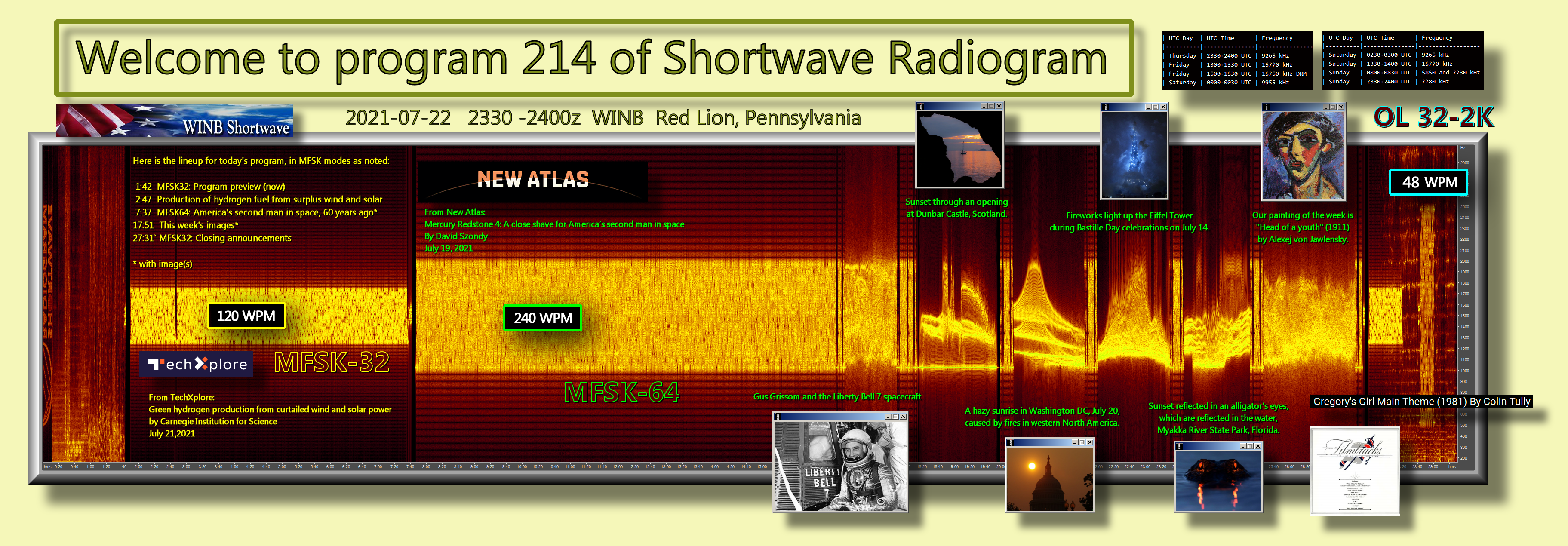
http://www.rhci-online.net/radiogram/radiogram.htm

RSID: <<2021-07-22T23:31Z
MFSK-32 @
9265000+1500>>
Welcome to program 214 of Shortwave Radiogram
I'm Kim Andrew Elliott in Arlington, Virginia USA.
Here is the lineup for today's program, in MFSK modes as noted:
1:42 MFSK32: Program preview (now)
2:47 Production of hydrogen fuel from surplus wind and solar
7:37 MFSK64: America's second man in space, 60 years ago*
17:51 This week's images*
27:31` MFSK32: Closing announcements
* with image(s)
Please send reception reports to
radiogram@verizon.net
And visit http://swradiogram.net
Twitter: @SWRadiogram
From TechXplore:
Green hydrogen production from curtailed wind and solar power
by Carnegie Institution for Science
July 21,2021
Designing future low-carbon energy systems to use power generated
in excess of the grid's demands to produce hydrogen fuel could
substantially lower electricity costs, according to new work
published by Advances in Applied Energy by Carnegie's Tyler
Ruggles and Ken Caldeira.
Renewable energy sources like the Sun and wind have natural
variation due to weather patterns—some days are bright and clear,
others are overcast; some days are blustery, others are still.
This means that renewable power-generating infrastructure needs
to be designed with this variability in mind.
To ensure that there is enough power available to meet society's
peak demands when nature isn't cooperating, more turbines and
solar panels must be built than are necessary on windy and sunny
days. But on the flip side, when the weather is amenable, there
is no way to use or store all of the electricity that wind or
solar generators are capable of producing.
"Places that have already made substantial commitments to wind
and solar power, including California, Texas, Germany, and the
U.K. increasingly need to curtail production, which has raised
interest in putting the unused capacity to good use," Caldeira
explained.
Having the flexibility to redirect unused energy capacity into
making fuels could fill the gap between constant energy demands
and variable energy resources. An example of this would be making
hydrogen fuel by splitting water into hydrogen gas and oxygen
gas, a process called electrolysis.
Ruggles and Caldeira, together with colleagues Jacqueline Dowling
and Nathan Lewis of Caltech, set out to probe the possibility of
adding this kind of flexibility into our energy system. To
accurately represent the opportunities and limitations of wind
and solar variability, they created a model that incorporated
historical weather data.
"We found that in the modeled low-carbon systems there is almost
always enough excess electricity generated to drive hydrogen
electrolysis after sending the necessary power to the grid for
other uses," Ruggles said.
According to their model, a system that uses excess electricity
to produce hydrogen fuel could be implemented using energy
infrastructure built to supply the grid. They found that new
capacity would not need to be constructed until the amount of
electricity used to power hydrogen fuel cells exceeds about 20
percent of total energy demand. However, the price tag of any
eventual expansion could be offset by a lower average cost of
electricity under this arrangement.
"One of the biggest challenges of instituting a low-carbon or
carbon-free electricity sector has been effectively integrating
variable resources like wind and solar," Caldeira concluded. "Our
work demonstrates that production of electrofuels such as
hydrogen could be a major step toward making better use of wind
and solar resources, especially if the electrofuels could be
produced at low capital cost."
https://techxplore.com/news/2021-07-green-hydrogen-production-curtailed-solar.html
Shortwave Radiogram now changes to MFSK64 ...
RSID: <<2021-07-22T23:37Z
MFSK-64 @
9265000+1500>>
This is Shortwave Radiogram in MFSK64
Please send your reception report to
radiogram@verizon.net
From New Atlas:
Mercury Redstone 4: A close shave for America’s second man in
space
By David Szondy
July 19, 2021
Sixty years ago this week, America sent its second man into
space. The mission had gone flawlessly, but nearly ended in
tragedy when the Liberty Bell 7 Mercury space capsule sank into
the sea, almost taking astronaut Virgil Grissom with it.
On July 21, 1961 at 8:45 am EDT, NASA astronaut Virgil "Gus"
Grissom was sitting snug and secure in the confines of his
Mercury space capsule, call sign Liberty Bell 7, at the end of
the Mercury Redstone 4 (MR4) mission. He was America's second
person to fly into space and just the third in the world at that
point.
The 15-minute-and-37-second suborbital flight from Cape Canaveral
Air Force Station Launch Complex 5 in Florida had gone off
without incident and now Grissom was jotting down instrument
panel readings as he waited for the US Navy helicopter hovering
overhead to secure the capsule for recovery and transfer to the
aircraft carrier USS Randolph.
Suddenly, there was a loud bang and the entry hatch blasted away
from the capsule. The sea flooded over the sill and into the
compartment as Grissom scrambled out of his seat and through the
opening. In seconds, he was treading water in his spacesuit as
the capsule began a plunge of 3,000 fathoms (18,000 ft, 5,500 m)
to the bottom of the Atlantic Ocean north of the Bahamas – a fate
that he almost shared.
The mission
Less than 20 minutes earlier, Grissom was lying on his back in
his bespoke padded seat inside Liberty Bell 7, which was still on
the pad at Cape Canaveral atop the Redstone booster rocket. He'd
been selected in January 1961 as the primary pilot for Mercury
Redstone 4, with John Glenn as his backup.
The US was still smarting at being beaten to put the first man in
orbit by the Soviets with the flight of Vostok 1. But NASA was
committed to developing the technology and experience needed for
true spacefaring rather than stacking up a string of stunt-like
firsts like their Russian counterparts, so the plan remained to
continue flight testing the Mercury capsule before committing to
an orbital mission.
For Mercury Redstone 4, the plan was to repeat the flight of
Mercury Redstone 3 and test the heavily modified Mercury
spacecraft that had integrated the design demands of the Mercury
Seven astronauts. These changes, plus the time required to prep
the rocket, were some of the many reasons the timetable couldn't
be pushed up. Worse, the liftoff date originally planned for July
16 kept being pushed back due to bad weather at the Cape.
Gus Grissom in the ready room at Cape Canaveral
Gus Grissom in the ready room at Cape CanaveralNASA
However, there were some changes to the flight plan. The most
important of these was to drastically reduce Grissom's workload
so he could spend more time looking out the window and generally
enjoy the experience of flying weightless through space. So, for
example, where Alan Shepard spent 12 minutes in manual control of
Mercury Redstone 3 to carry out maneuvers, Grissom would only do
so for one.
The new Mercury
Built by McDonnell Aircraft, the Mercury capsule for MR4, number
11 in the production series, was a very different craft from the
one that took Alan Shepard into space a few weeks before, and
included last minute modifications like the rearranged instrument
panel that Shepard found hard to scan on his flight.
The most obvious difference was that instead of two small
portholes, Liberty Bell 7 had a large, trapezoidal centerline
window. Made by Corning Glass Works in Corning, New York, it was
made out of multiple layers of glass bonded together with one
layer made of a thick sheet of Vycor high-silica,
high-temperature glass and the others of tempered glass. The
window could withstand temperatures of up to 1,800 °F (980 °C)
and was as strong as the spacecraft's pressure vessel itself.
The manual controls for the capsule had also been improved, with
small movements of the joystick allowing finer, more responsive
and more stable responses. With rate damping and redundant firing
systems for the pitch, yaw, and roll thrusters, it was like an
old car being given power steering.
In addition, the posigrade rockets that thrust the capsule away
from the booster were modified so that they fired inside the
adapter trunk. This gave 78 percent more thrust thanks to the
trapped gases producing a pop-gun effect.
But the most significant modification was to the hatch. The
original Mercury hatch was designed to bolt on with 70 titanium
bolts, which made removing it a long and tedious prospect.
Instead, if the pilot had to get out in a hurry after splashdown,
he was expected to remove a small bulkhead in the nose of the
capsule and crawl out through the antenna trunk.
The astronauts didn't like this arrangement at all. It made them
essentially passive passengers until the capsule was fished out
of the sea and flown to the recovery carrier. Also, the antenna
trunk exit only worked if the astronaut was fit and conscious. If
they were injured or unconscious, it was almost impossible to get
them out while in the water.
Instead, the astronauts insisted on a hatch that they could open
by themselves from the inside, like those found on an airplane.
The first version, which flew on Mercury Redstone 3, used a
latch, but this was slow and weighed 69 lb (31 kg), which was too
heavy for orbital flights. The new, lighter hatch had holes
drilled in the bolts, which were filled with explosives and a
detonator. By pressing a pin and pulling a plunger, the pilot
could blow all the bolts at once and eject the hatch.
What could go wrong?
In contrast to Mercury Redstone 3, the morning's preflight
preparations for MR4 were better timed and less hurried. Grissom
was calm as he climbed into Liberty Bell 7 again and waited
through a 30-minute hold in the countdown while a hatch bolt was
repaired and the other 69 were inspected by McDonnell
technicians. This was followed by another hour of holds for minor
technical difficulties.
Finally, at 8:30 am EDT, the count reached zero and the engine on
the Redstone ignited. It fired for two minutes and 20 seconds
before shutting down. Two seconds later, the escape tower was
jettisoned and the posigrade rockets then separated Liberty Bell
7 from the booster at a speed of 15 ft/s (4.6 m/s).
Inside the capsule, Grissom was a bit scared by the liftoff, but
soon calmed down as the acceleration mounted to 3 g and the
vibrations increased. Looking out the window, he could see the
escape tower as it rocketed free and then drifted away behind
him, falling back to Earth to splash down in the Atlantic.
Going ballistic
Now Liberty Bell 7 was ballistic. The spacecraft automatically
turned itself 180 degrees to face backwards, with the heat shield
facing forward. A mere five minutes into the flight, the capsule
reached a maximum altitude of 115 miles (185 km) and was 150
miles (240 km) downrange from Cape Canaveral. Fifteen seconds
later, the retro rocket pack fired, slowing the capsule for
reentry.
Inside, Grissom had trouble concentrating on his instruments
because of the spectacular view out of the new window. Below him
rolled the Florida coast, including Cape Canaveral, Merritt
Island, the Banana River, the Indian River, what looked like an
airport runway, and West Palm Beach.
At the seven-minute-and-15-second mark, the capsule began reentry
and slowed as it encountered the atmosphere. Despite being
engulfed in flame as the heat shield glared white-hot, Grissom
continued to call out instrument readings, though he had no way
of knowing if his transmissions were getting through the plasma
cloud around him.
Three minutes later, Liberty Bell 7 had slowed enough to deploy
its drogue chute followed by the main shute, then the heat shield
jettisoned and a trunk-like landing bag fell open under the
capsule to act as a shock absorber for when it hit the water.
Looking up warily at a six-inch (15-cm) tear in his parachute,
Grissom dumped his peroxide fuel and transmitted his instrument
readings.
Splashdown and hatch blown
Fifteen minutes and 37 seconds after launch, Liberty Bell 7
splashed down 300 miles (480 km) from Cape Canaveral. An
automatic radio beacon switched on and green dye squirted into
the sea from the capsule to act as a visual marker for the two
recovery helicopters.
In preparation for recovery, Grissom removed the oxygen hose from
his spacesuit, opened his helmet visor, and detached the helmet
from the suit's metal collar as the capsule righted itself after
splashdown and stabilized. As the recovery helicopters arrived,
Grissom told Lieutenant James L. Lewis, the pilot of the primary
recovery helicopter, to wait five minutes while he recorded the
final readings on his instrument panel.
Finishing his instrument notes, Grissom relaxed as he waited for
recovery when he heard a bang. The hatch vanished and water
flooded inside as the explosive bolts detonated, hurling away the
hatch. Luckily, Grissom had unbuckled his harness, so he could
scramble out of the hatch. If he hadn't he could have been
America's first space fatality.
The capsule became heavier by the second. Buoyed up by the air in
his suit, Grissom swam back to see if he could help to save his
spacecraft, but the water flooding in soon had it weighing over
5,000 lb (2,300 kg) – so heavy that the tether had to be released
to keep the helicopter from crashing, and Liberty Bell was left
to sink to the sea bottom.
Now alone in the water, Grissom looked around for divers to
assist him and was confused when he saw none. Worse, he found
that his suit was losing air, and he had trouble staying afloat.
Working quickly, the helicopter crew dropped a personnel hoist.
Grissom hurriedly threw the horse collar sling over his
shoulders, though backwards, and he was winched upward. To add
insult to indignity, the swelling sea dunked Grissom twice before
he became fully airborne.
He had only been in the water for about five minutes.
The wash up
Liberty Bell 7 remained on the bottom of the Atlantic until it
was recovered in 1999 by Oceaneering International Inc, but even
examination decades after the event failed to definitively answer
why the capsule's hatch blew when it did. The immediate theory
was that Grissom had accidentally struck the plunger, setting it
off. However, it might also have been due to the outside lanyard
getting tangled by the landing bag's straps, a faulty ring seal,
or static electricity from the helicopters.
One bit of evidence in Grissom's favor is that his hand was
uninjured after the flight, while all the other Mercury
astronauts who blew their hatches suffered slight bruising. This
was dramatically demonstrated by Wally Schirra after the Mercury
Atlas 8 mission in 1962. As his Sigma 7 capsule sat on the deck
of the recovery carrier, Schirra deliberately blew the hatch to
prove that the detonation caused visible hand injuries,
vindicating Grissom.
With Grissom safe, the United States now had two crewed missions
under its belt and was ready for the first orbital flight later
in the year. Unfortunately, they suffered another international
embarrassment two weeks later when the Soviet Union sent Vostok 2
into orbit piloted by Gherman Titov.
The upcoming Mercury Atlas 6 mission with John Glenn was
scheduled to make up to three orbits in under five hours before
returning to Earth. Titov stayed in space for over 25 hours and
made 17 orbits, seven months before Glenn made it to the launch
pad.
The Americans still had a lot of catching up to do in the race to
the Moon.
https://newatlas.com/space/mercury-redstone-4-60th-anniversary/
Image: Gus Grissom and the Liberty Bell 7 spacecraft ...
Sending Pic:307x208;

This is Shortwave Radiogram in MFSK64
Please send your reception report to
radiogram@verizon.net
This week's images ...
Sunset through an opening at Dunbar Castle, Scotland.
https://bbc.in/3zmFrD1 ...
Sending Pic:198x175C;

A hazy sunrise in Washington DC, July 20, caused by fires in
western North America.
https://bit.ly/2W3dH7X ...
Sending Pic:200x148C;
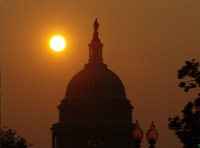
Fireworks light up the Eiffel Tower during Bastille Day
celebrations on July 14.
https://bit.ly/3kNVvcT ...
Sending Pic:150x200C;
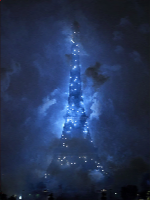
Sunset reflected in an alligator's eyes, which are reflected in
the water, Myakka River State Park, Florida.
https://bit.ly/3eM0kzL ...
Sending Pic:199x139C;

Our painting of the week is "Head of a youth" (1911) by Alexej
von Jawlensky. https://bit.ly/2TtiMpn ...
Sending Pic:189x203C;

RSID: <<2021-07-22T23:57Z
MFSK-32 @
9265000+1500>>
This is Shortwave Radiogram in MFSK32 ...
Shortwave Radiogram is transmitted
by:
WRMI, Radio Miami International, wrmi.net
and
WINB Shortwave, winb.com
Please send reception reports to
radiogram@verizon.net
And visit http://swradiogram.net
Twitter:
@SWRadiogram or twitter.com/swradiogram
I'm Kim Elliott. Please join us for the next Shortwave
Radiogram.
RSID: <<2021-07-22T23:58Z
OL 32-2K @
9265000+1500>>
Thank you for decoding the modes on Shortwave Radiogram ...
|
Closing music SWRG#214: Born: August
13, 1954; Composer of the music for the film Gregory’s Girl, winner of the Eurovision Song Contest with Ireland’s Johnny Logan, band member with John Martyn and of Cado Belle, Colin was a modest and reserved individual who could have performed with virtually any major international band of recent times.
|

http://www.rhci-online.net/radiogram/radiogram.htm
|
QTH: |
D-06193 Petersberg (Germany/Germania) |
|
|
Ant.: |
Dipol for 40m-Band & Boomerang Antenna 11m-Band |
|
|
RX for RF: |
FRG-100B + IF-mixer & ICOM IC-R75 + IF-mixer |
|
|
Software IF: |
con STUDIO1 - Software italiano per SDR [S-AM-USB/LSB] + beta 11 Version 2.80 (August 21, 2018) - for scheduled IF-recording |
|
|
Software AF: |
Fldigi-4.0.18 + flmsg-4.0.7 images-fldigifiles on homedrive.lnk |
|
|
OS: |
German XP-SP3 with support for asian languages |
German W7 32bit + 64bit |
|
PC: |
MEDION Titanium 8008 (since 2003) [ P4 - 2,6 GHz] |
MSI-CR70-2MP345W7 (since2014) [i5 -P3560 ( 2 x 2,6GHz) ] |
http://wiki.radioreference.com/index.php/Decoding_the_SW_Radiogram_Broadcasts
https://www.qsl.net/ve7vv/Files/Digital%20Modes.pdf

RSID: <<2021-07-22T02:48Z MFSK-64 @ 5850000+1500>>

This Is A Music Show #125
22 July 2021
0200-0300UTC Thursday on 5850 kHz
via WRMI, Okeechobee USA
***ALSO***
TIAnExpressMS w/ Radio Northern Europe International
via Channel 292 in Germany, mainly on 6070 kHz .
Broadcast various dates/times/freqs. Check the schedule here:
https://www.channel292.de/
https://rnei.org/
----------------------------------------
PLAYLIST
Biz Markie - Just A Friend
-----
The Blues Busters - Love Me Forever
Jackie Brown - Send Me The Pillow VERSION
The Fifth - Tears
-----
Animotion - Obsession
Pretty Poison - Nightime
Moti Special - Stop! Girls Go Crazy
-----
Mighty Diamond - Right Time VERSION
Barrington Levy - Luba Mouth VERSION
Dillinger - Caymanas Park VERSION
-----
Golden Awesome - Ruby
-----
THIS DATA w/ Bert Kaempfert - While The Children Sleep
-----
Steve Hillage - Radio
----------------------------------------
TIAMS Website:
https://thisisamusicshow.com
Go here for show archives + official shop!
-----
Please send reception reports/comments:
thisisamusicshow@gmail.com
Follow TIAMS on Twitter:
www.twitter.com/ThisIsAMusicSho/
------
Thanks for listening!
--YOUR HOST--
EOM
RSID: <<2021-07-22T02:50Z
MFSK-64 @
5850000+1500>>
Sending Pic:300x300Cp4;
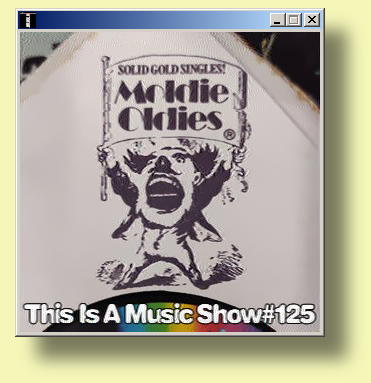
PLAYLIST
RSID: <<2021-07-25T01:30Z MFSK-64 @ 9925000+1500>>
Tony Joe White was born July 23,
1943.
He died in 2018.
Sending Pic:257x152;
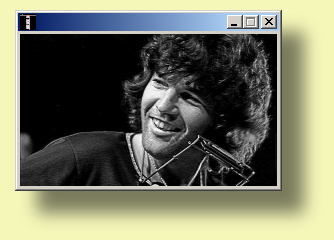
tonyjoewhite.com
bit.ly/3iu1Kjs
Please report your decode to
themightykbc@gmail.com